Mathematics is often assumed that there are fixed methods of solving, and there are some learned algorithms, that keep following them, but is mathematics really like this? Some people think that there is only one way to solve a problem, or they think that the only way to solve a problem is to use algorithms.
To know certain algorithms, we have to follow a definite procedure. We do it again and again and get the master on that procedure. Mastery means we have accuracy, efficiency, and flexibility.
This procedure fluency leads to mastery of conceptual understanding. Often this myth faced by educators that we should work on conceptual understanding first then procedure fluency. Both are complementary to each other.
In the number sense recognizing numbers by number names and symbols is not sufficient, the number sense is complete when the learner understands the meaning of that number. He/she relates this number with other numbers, he can visualize its quantity, spatial relationships, one more than, one less than, the benchmark of 5 or 10, and part-part-whole relationships.
Example from NCERT textbooks-
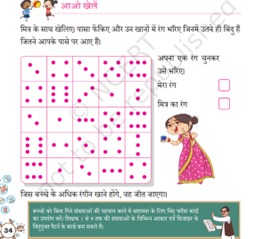
Spatial relationship: recognizing how many without counting and seeing a visual pattern.
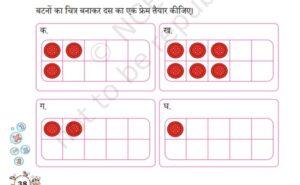
Benchmarks of 5 and 10 – 10 play such an important role in our number system (and two fives make up 10), so children must know how numbers relate to 5 and 10.
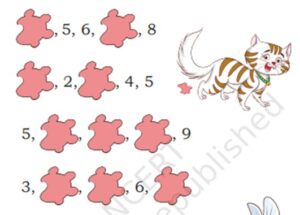
One and two more, one and two less – this is not the ability to count on two or count back two, but instead knowing which numbers are one and two less or more than any given number-
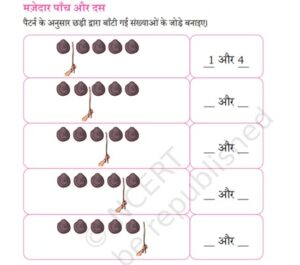
Part-part-whole relationship seeing number as being made of one or more parts.
We spend all this time helping children develop strategies for addition, subtraction, multiplication, and division. It seems like they “get it” but then later in the school year, they go right back to counting on their fingers or other inefficient strategies.
counting on their fingers is a viable strategy and is where most kids start…. but it is inefficient and doesn’t help them build their flexibility with numbers, which makes it very hard for them to become fluent.
To be FLUENT at something one needs:
• Accuracy
• Efficiency
• Flexibility
That’s with anything in life that you are fluent in, here is an example regarding becoming fluent with addition facts. When we observe our students do we see:
Accuracy – can they get the correct answer?
Efficiency – can they do it quickly?
Flexibility – do they have another way to think through a problem if they don’t instantly know it, that is still quick and gets them the correct answer?
Most ‘fact fluency’ instruction and testing are spent focusing on the first two, Accuracy & Efficiency.
Then after that, we try to teach them strategies as a way to build their flexibility, but they often forget them later. They may ‘know it’ for the lesson or test but it doesn’t last long term.
However, if we focus on building their FLEXIBILITY first, the by-product of that is that kids become more accurate and efficient as well as having a solid foundation that makes them flexible thinkers.
Breaking down numbers to your advantage for problem-solving is called number flexibility, which is a prerequisite for doing good math.
Now I am sharing Strategies Under NIPUN Bharat Mission Uttar Pradesh for developing procedure fluency (Grades 1,2 and 3).
1. Textbooks, Workbooks, Teaching guides, Maht kit, Posters, and board (FLN package)
2. Support from teachers (instructions, formative assessments, remedial teaching, and feedback)
The results of the above both improve students’ engagement in learning time.
This theory of change leads to improved numeracy outcomes in Uttar Pradesh.
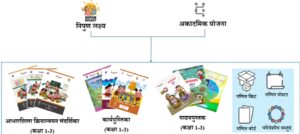
Through this FLN package Teachers are enabled to
1. Focus on understanding: Teachers ensure that there is a focus on conceptual understanding and procedural fluency by asking questions for which there is more than one right answer. Responding to a student who gave an incorrect answer by helping them reach the correct solution or discussing why the answer was incorrect.
Encouraging students to use multiple strategies and in some cases to discuss their mathematical ideas.
2. Use of multiple representations- Teachers use multiple representations (concrete materials, pictures, symbols). Explicitly link representations (E-L-P-S).
3. Making connections between math concepts and the real world or student’s experiences.
4. Active student engagement – Teachers ensure that students are engaged and have opportunities to participate actively by using a variety of questioning techniques and providing dedicated time for independent and group work (G-R-R).
5. Assessment-informed instruction- Teachers use formal and informal assessment to inform instruction by monitoring students while they work and helping students who appear to be struggling and using informal and formal assessment to group and instruct students at their level.
Explicitly in the academic year 2024-25, the State will introduce the Procedure fluency package as follows –
Types of Procedural Fluency Worksheets
– Topics are chosen from the LOs taught in the previous 3 weeks.
– Each drill worksheet/questions focus on more practice on 1 topic per day
– Each check-up quiz worksheet focuses on 2-3 LOs from the previous 3 weeks
Drill worksheets:
These include questions on:
– One chosen key topic from the previous 3 weeks
– 8-10 questions
– Only one type of questions
– No multiple instructions to be given
– 1 worksheet per week (Day 4)
– Frequency of thrice in four weeks
– Sample questions for daily practice (in TG) Check-up quiz:
These include questions on:
– 2-3 chosen key topics from the previous 3 weeks
– 8-10 questions
– Different types of questions
– Multiple instructions to be given if needed
– 1 worksheet per week (Day 4)
– Frequency of once in four weeks
Types of worksheets a week –
1. Practice worksheets 3 per week and sample questions in TG for drill
2. Drill worksheet (day 4)
3. Assessment worksheet “Maine sikh liya” (day 5)
4. Revision worksheet (day 6)
Students will work daily on worksheets, 6 worksheets per week.
Planning for Procedural Fluency worksheet:
Day 1 to 3- The teacher gives 8 to 10 questions based on sample questions given in the Teacher’s Guide for period 2 after working on practice worksheets.
Day 4 – Drill worksheet given in students’ workbook for period 3.
3-week single concept and 4th-week interleaving worksheets
Day 5 and 6- The Teacher gives 8 to 10 questions based on sample questions given in the Teacher’s Guide for period 3 after working on “Maine sikh liya” and “saptahik punravritti” worksheets.
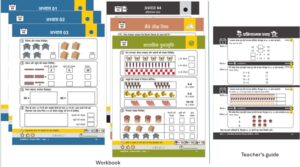
Week 5, Grade 2 Workbook and Teacher’ guide
Example from Grade 3 Teacher’s Guide, Uttar Pradesh
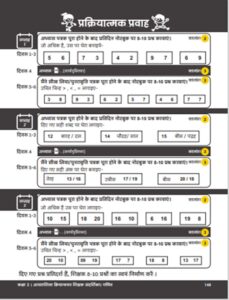
Sample question in teacher’s guide for Day 1-3 and 5,6
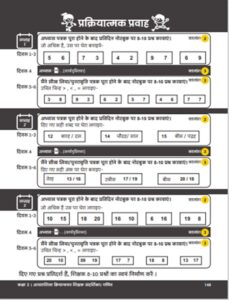
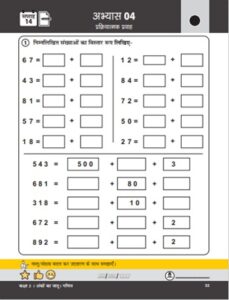
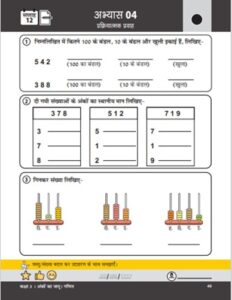
Day 4 Worksheets week 12 and 14
Uttar Pradesh is thriving towards achieving NIPUN Laksya by 2025-26.
References:
NCERT textbooks,
Teacher’s guides, and workbooks of Uttar Pradesh, FLN grades 1 and 3,
Mathematical Mindsets by JO Boaler,
Number sense, build maths by Christina
Science of teaching webinars
Vikas is a reflective practitioner. He is passionate about quality education. He is a content creator- blog, YouTube channel, website, and book author. Currently, He is working as a Numeracy specialist at the Language and Learning Foundation, Uttar Pradesh. He can be reached at vikasbsw@gmail.com, www.vikassharmaeducation.com, or @vikassharmaeducation.